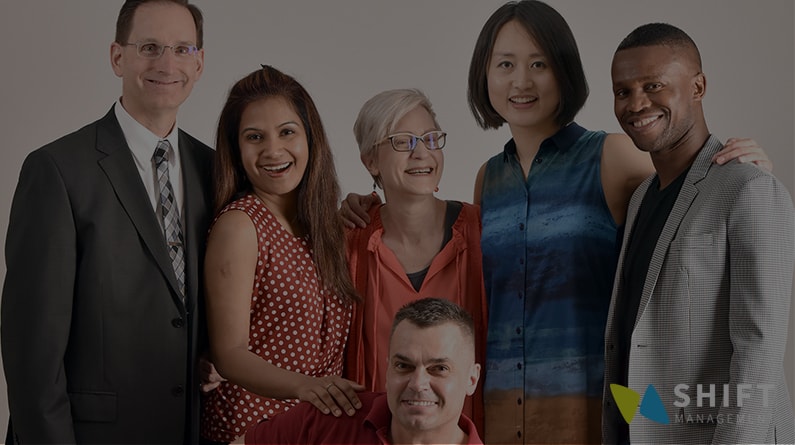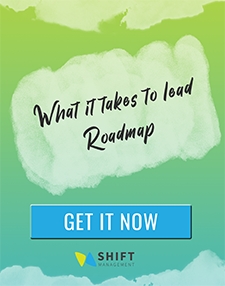
Belonging: The antidote to toxicity and the elixir of engagement!
Recently I ran a web training session about successfully addressing toxic workplaces. I asked, as I usually do, for any workplace experiences, attendees might like to send me in advance so I could consider them as I planned the masterclass. I was SWAMPED with incidents of toxic workplace behaviours. They just kept pouring in…
The same thing happened when I asked people to describe the kinds of leadership behaviours they found most frustrating and one more time when I asked people if they felt included and valued in their workplaces. Asking for people to contribute to the pool of “places I have loved to work for” resulted in a much lower participation.
So, how can we focus our attention on belonging so that more people can sincerely say, “I love working here!”? What practical strategies could be put in place to make inclusion the way we plan for workforce development?
Many workplaces don’t put much thought into developing a climate where their employees feel safe and have a sense of belonging. They are so focused on the tasks and the job to be done that they fail to see the connection between happy employees and a productive, profitable business. You can’t blame them when you consider that owners, decision makers and managers, probably have never experienced being included or valued themselves. Have you ever wondered what it looks and feels like to truly include employees? Would you like to know how successful companies improve their business outcomes by focusing on being inclusive? To help you out with this project, I have gathered a few examples of employers who actually thought this out and have had huge success as a result. They do it by focusing on developing their workforce so that everyone feels included and valued. Each example is real and addresses some aspect of workplace inclusion. I hope you find them helpful in getting you to picture your own workplace inclusion strategy.

Let’s start at the beginning with the experience of applying for a job – and not getting it…
Imagine this:
You are a job seeker who sees a job posting that sounds like it is describing your talents and skills. It is almost as if the job description is speaking to you personally. Not only do you understand exactly what the employer needs, you know how to address the problem from your skill set. When you apply you receive an automatic response saying, “Thank you so much for your application. If it meets our criteria you will hear back from us within seven working days, if not you will receive an email directing you to other options.” Three days later you receive an email saying that you did not meet the criteria and explaining in three bullet points what you would need to do to qualify in the future. It is not only the nicest rejection letter you ever received, it gives you an actual game plan for getting into the position in the future. Although you never actually get a job with this company, you feel acknowledged and valued as a human being. You have a way to move forward with your skill set and you are equipped to present yourself better for the next opportunity.
Does this sound like a rejection fairy tale? In fact, this is the type of job application process that inclusive employers think about. Inclusive employers consider the entire employee experience in the same way they might consider a customer experience journey.
It’s not that it is so difficult or expensive to be inclusive, it’s just that it takes thinking about people as real human beings, and considering that everyone who interacts with you is either going to drive business to you or away from you depending on the quality of their experience. It also requires some strategic planning coming from the idea of “what would it feel like if..”.
Have you checked out our
Employer Certificate in Workplace Inclusion workshop yet?
Learn how to build your workplace belonging so employees say, “I LOVE working here!” and become your biggest brand ambassadors.

For the next steps, let me provide you with a few examples of inclusive employer practices from several very different industries. In each of the following examples, the company thought about what would be the best experience for the employee or potential employee, while cutting down on unproductive or poorly thought out workplace integration processes and staff frustration.
Transparency and employee inputs
A chemical engineering company provides a checklist of requirements for the three levels of interviews for each job description and sends it in advance to applicants. Anyone who passes the three levels is interviewed by three potential peers who rate each candidate as a group consensus process, and submit their rating to the manager who does the final interview.
The peer group then takes each candidate through the company and introduces the person as “one of our valued potential candidates” where they receive a warm welcome from each employee they meet.
Candidates who are not hired say it was the most “transparent and inclusive” interview they ever experienced. Those who are hired already know who they will be working with and where, and integrate more easily into the company culture.
Customers as employees, employees as customers
A McDonalds restaurant owner tells his staff that everyone who comes into the restaurant could be a future colleague and asks them to “scout for talent” among the customers. When there are new hires, they are first trained to see all their colleagues as customers and to treat them with the same respect they would use to treat customers. In this way the entire staff feels responsible for both bringing in and ensuring the success of new hires and they are constantly reminded of a high standard of customer service. This particular McDonalds restaurant not only has the highest retention rate in Canada, but it has consistently remained one of the top three national sellers in spite of being located in a small community.
Buddies and coaches, removing obstacles
A homecare business has a set of orientation processes that fully equip new hires to not only do their jobs, but to have regular check ins, one-on -one meetings and career planning sessions at assigned periods over a period of 18 months. New hires are provided with a buddy, a job coach and a mentor. Within the year, each person working for the company is assigned to another staff member in one of the three roles: buddy, coach or mentor. Minority population hires are asked in confidence by the end of the year if they would feel comfortable bringing qualified people from their cultural group to the company as job applicants. If the response is no, the HR director asks what obstacles could be removed and requests suggestions.
Incentives are provided to employees who suggest a process that has resulted in a company-wide improvement, and to anyone who brings in a candidate who is hired and stays for three months or longer.
Gradual steps and cross training
A chicken processing plant brings job applicants into a clean room where they watch a 10-minute video about the company operations. They are told that if they still want to continue the application, there are two more introductions, or they can leave, no questions asked, with a 20% discount for chicken as a thank you for their time. Those who continue the process, walk through the plant from the cleanest to the messiest, which at the end is the slaughtering process. At each point applicants are told they can continue or leave with the discount coupon. By the end of the tour, those who are still there fill out application forms.
Orientation to the job follows a similar trajectory to gradually introduce new people to the rigours of the job as they are ready to handle it.
All positions are cross-trained so everyone can do between 3-5 jobs in the same pay category. In this way the company finds people who want to do the job, have the right attitude about it and are primed to include others and cooperate with all teams.
Time for your call to action!
How could you improve the “inclusivity factor” at YOUR workplace?
If you would like to learn more about how to develop an inclusive employee life cycle process that suits your business, join me at our Employer Certificate in Workplace Inclusion Masterclass Series ONLINE, where you will experience what it feels like to be truly included from job application through to retirement, get access to two amazing handbooks of tips, templates and checklists and create your own short workplace inclusion plan. Finish with a certificate in workplace inclusion and a great logo for your website!
Online Dates are April 10, 17th and 24th, 10-11:30 a.m., 2018
Live in Calgary? Come to the first session LIVE, then finish the rest online!
Dates are May 9 (live workshop 8:00-11:30 a.m.), May 16th and 23rd online 10-11:30 a.m.
About Marie:
Marie Gervais, PhD, CEO Shift Management is a business-to-business entrepreneur who specializes in helping employers train their middle management to lead, get their workplace learning online and interactive, and conduct team assessments to figure out who to promote and how. She has a background in integrating internationally-trained individuals to the workplace and has supported many businesses in their efforts to hire, retain, support and promote immigrant and diverse employees.
Get in touch – she would love to hear from you: marie@shiftworkplace.com or 780-454-5661







